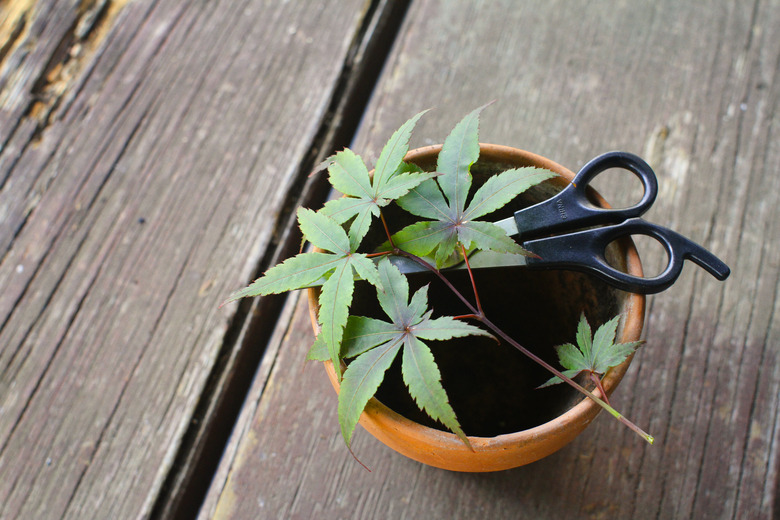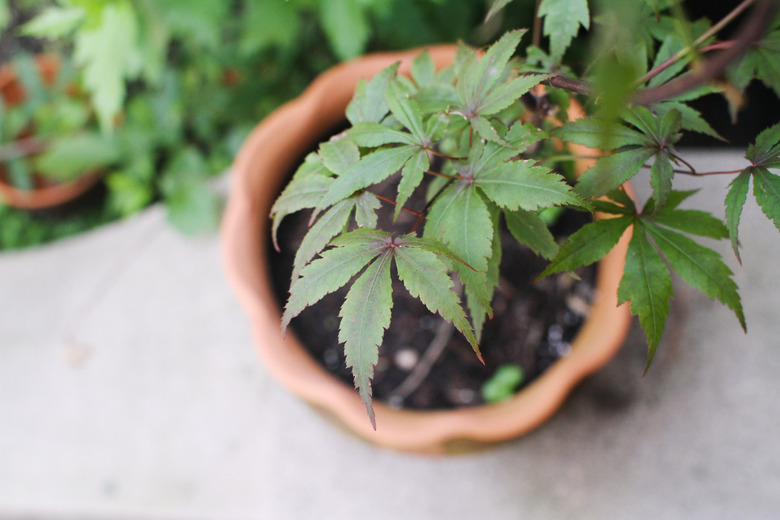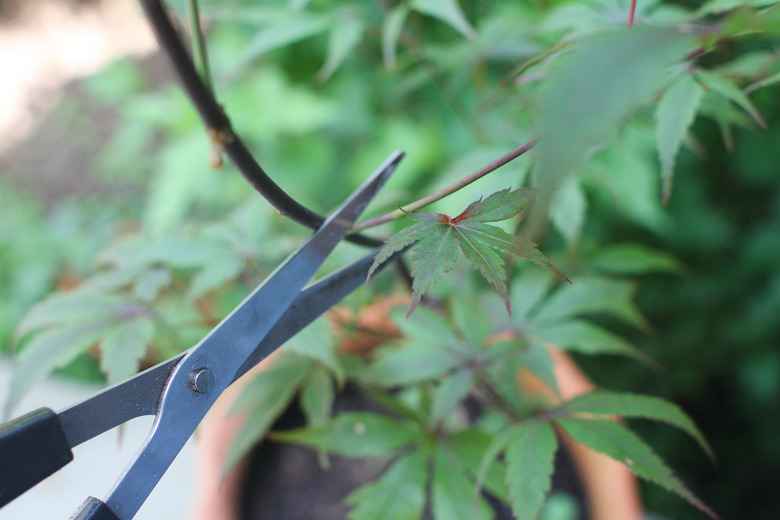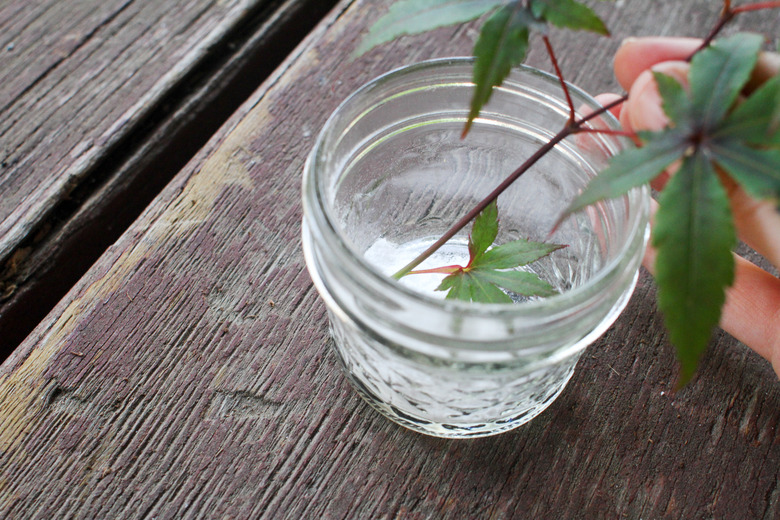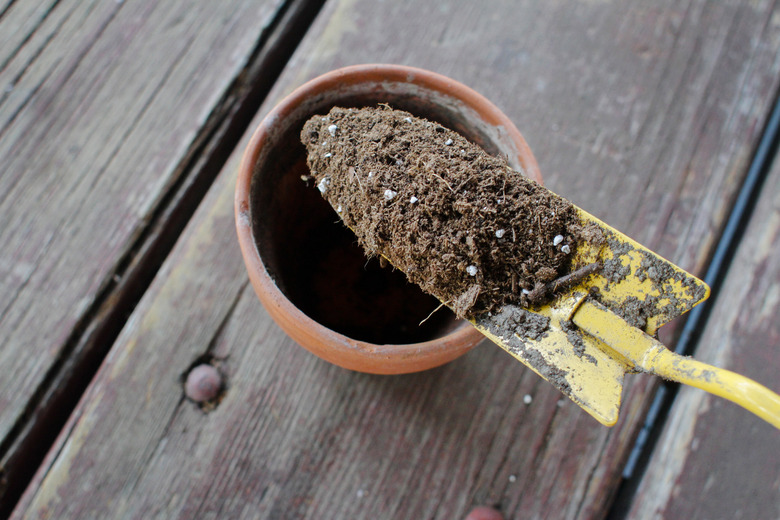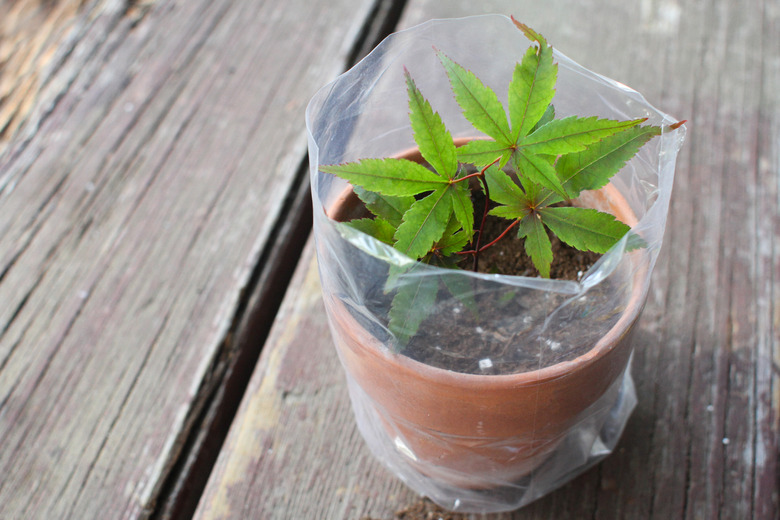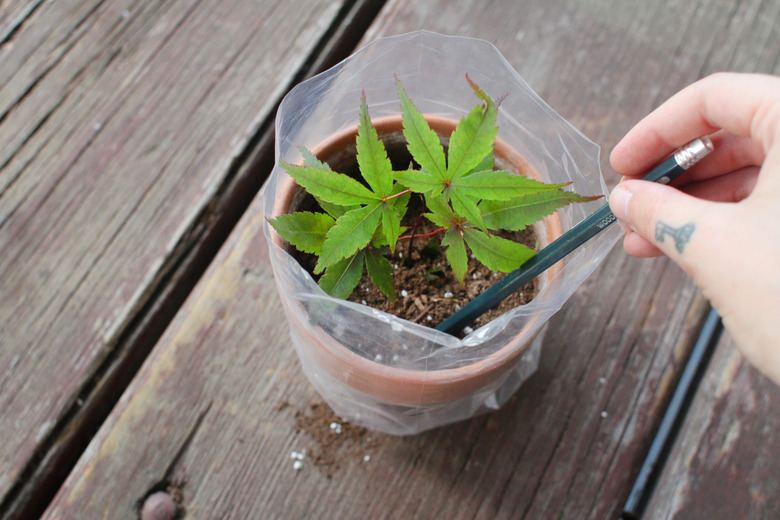How To Start A Cutting From A Japanese Maple Tree
Things Needed
-
Clean, sharp scissors or penknife
-
Bleach
-
Rooting hormone powder
-
Clay flowerpot
-
Commercial fast-draining potting mix
-
Pencil
-
Clear, thick plastic bag
-
Spray mister
The Japanese maple tree, scientifically known as Acer palmatum, features a graceful, spreading shape and brilliant foliage that, depending on the cultivar, can turn from green in the spring to maroon in the summer to crimson, yellow or bronze in the fall. It grows in U.S. Department of Agriculture plant hardiness zones 5 through 8. The Japanese maple is a colorful and dramatic addition to a rock or Zen garden, and excels as a specimen planting and in borders. Japanese maples can be challenging to propagate, or root from cuttings. But by using good propagation techniques, and choosing the cultivars that root with the least difficulty—among them the Bloodgood, Crimson Queen and Sango kaku—you can increase your odds of success.
Step 1
Select a young, vigorous Japanese maple tree from which to take your cutting. Make sure the tree is free of pests and diseases.
Step 2
Take the cutting in the spring or early summer, after new wood has slightly hardened. Disinfect the knife or shears in a solution of one part bleach in nine parts water before cutting. According to the Royal Horticultural Society, Japanese maple cuttings should be taken with a "heel"—a tail of bark from the parent tree—still attached at the base of the cutting's stem. The cutting should contain three leaf nodes.
Step 3
Pour out enough rooting hormone powder for one application, and dip the basal end, or cut end, into the powder to a depth of 1 inch. Coat the end of the cutting with an even layer about 1/16 of an inch thick. Discard unused powder.
Step 4
Fill a small clay flowerpot, that has at least one drainage hole in the bottom, with fast-draining potting mix, and use a pencil to make a hole in the middle to avoid disturbing the rooting powder. Insert the cutting in the potting mix so that one set of the leaf nodes is submerged about an inch in the soil.
Step 5
Enclose the cutting and pot in a plastic bag to maintain humidity. Set it in bright, indirect light. Open the bag twice a day to ventilate the cutting. Check the soil moisture and mist the plant with water so the cutting doesn't dry out. If the soil feels dry, provide just enough water to keep it moderately moist.
Step 6
Check for roots by probing gently around the base of the cutting with a pencil. According to the Sooner Plant Farm website, roots should begin to sprout on the cutting within 14 to 21 days. However, to increase the odds that your cutting survives, wait about a year, still misting your cutting twice daily and watering as needed, before transplanting it to a larger pot.
